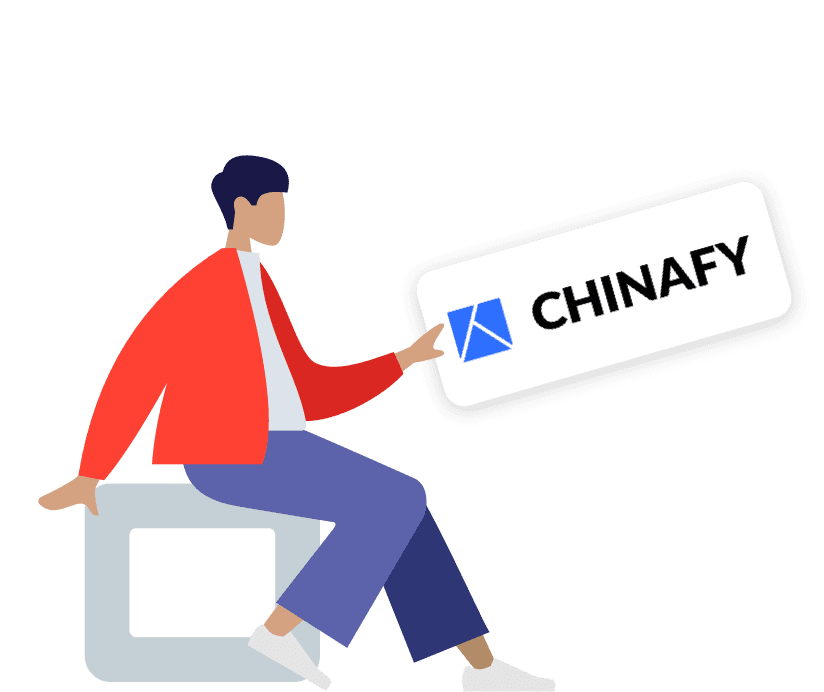1 - Expected post-Chinafy results
Princeton University, established in 1746, is a private Ivy League university located in Princeton, New Jersey. With over 8,000 students, Princeton regularly ranks among the top Universities globally pulling in the top US ranking from U.S. News, and 6th globally from the Times Higher Education, a UK-based magazine. In this study, we look at how their site performs in China.
Firstly, some data:
Students: 8,000+
Endowment: US$26 billion
Nickname: Tigers
Site: www.princeton.edu
Secondly, a quick note on transparency:
Chinafy does not currently work with Princeton University. We have taken their landing page, applied one pass of our compatibility intelligence, and subsequently performed a series of performance upgrades. This case study is not necessarily endorsed by Princeton.
With that out of the way, let's get down to business. This study will be broken down into two parts: i) General Overview, and ii) Technical Overview catering to two different audiences.
For this case study, we take their main landing page: www.princeton.edu and Chinafy it. We scan the page, evaluating each component, the method of coding, as well as the infrastructure. After reviewing our findings we take a series of steps that optimise the site across all facets of performance.
As one of the top Science universities, and a Princeton in Beijing program they run every summer, this University is no stranger to China, or Chinese students. When it comes to web technology and its impact on both recruiting, and collaboration, there's much room for improvement however.
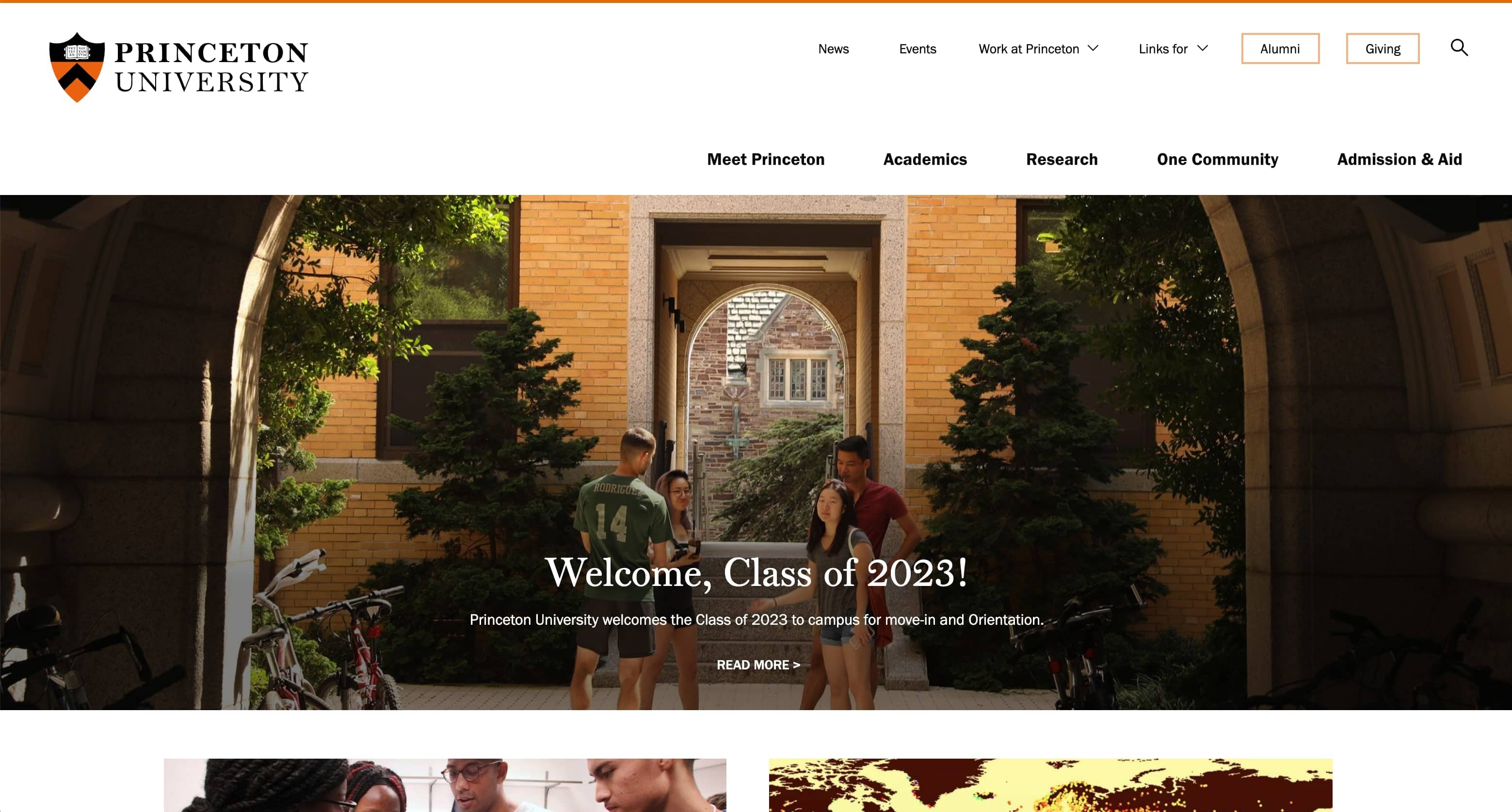
Looking at the Average Time to Page Complete, we see a stark difference between how the Original site performs, and how the Chinafy site performs.
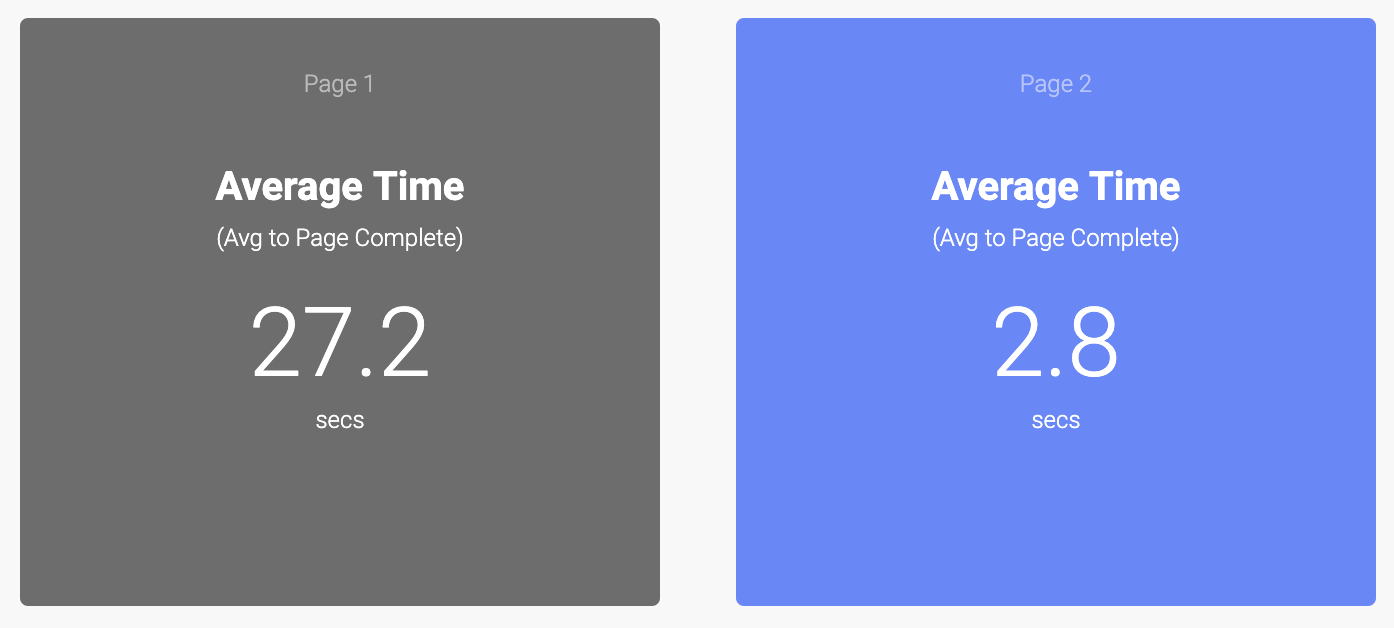
When viewing the video below (played at 2x speed), we see that while the loading time is markedly slower (taking 25+ seconds for a somewhat full visual experience), it's not debilitating. It appears that the page loads mostly, albeit there may be analytics, or trackers that are slow.
To evaluate this further, we compared the performance of the Original site (left) vs the Chinafied site (right) loading the pages 120 times over a 6 hour period. The results were night & day, with an almost 10x difference in loading times. These results are normal for US universities.
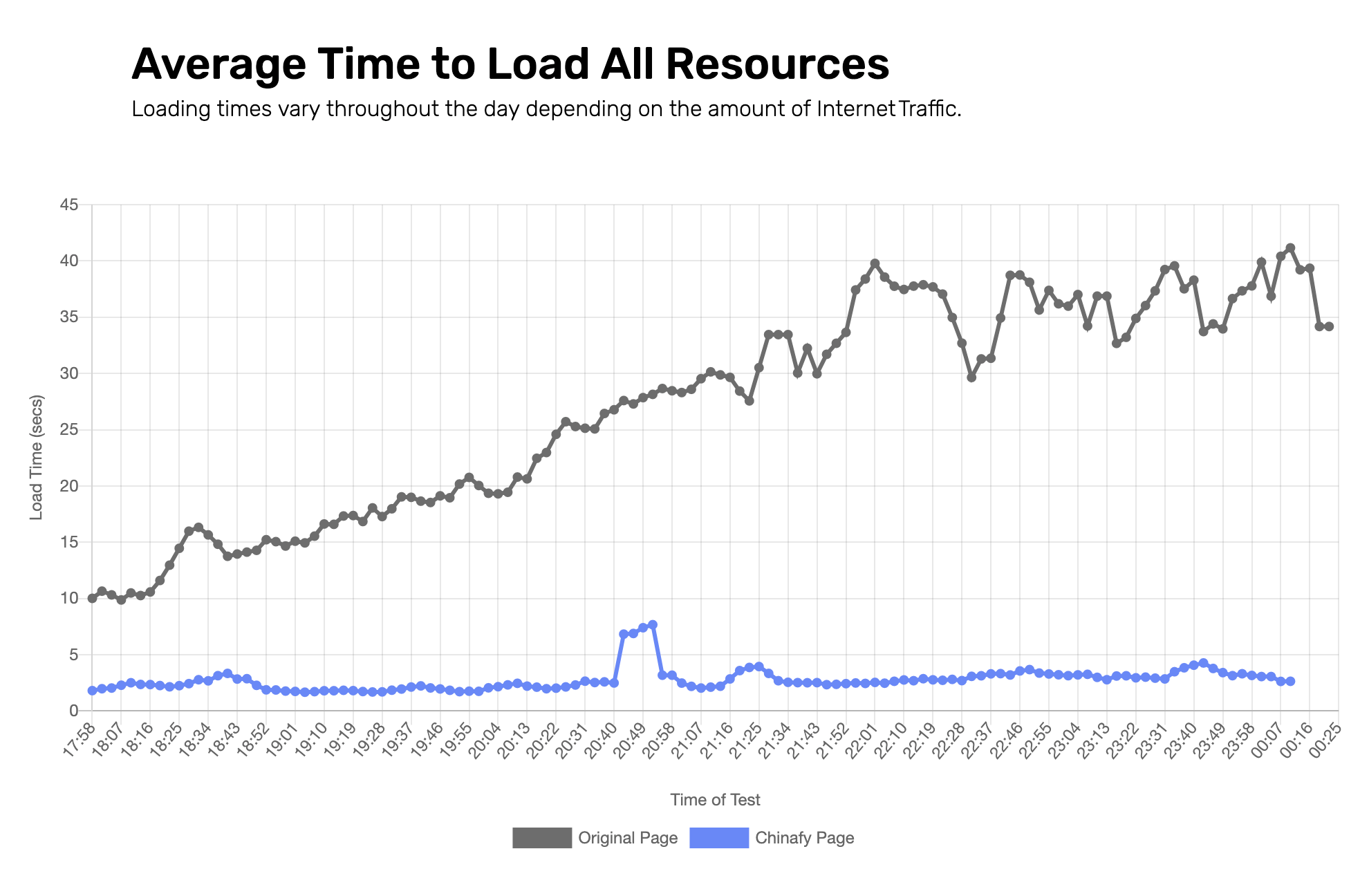
The CTA, or Call-to-Action for a University is somewhat different than an E-Commerce company. From attracting new students, to sharing research, to hiring new professors, the Princeton site fails (technologically) at all three. While the following analysis may not be fully relevant, it gives an indication as to how serious their problems are, and more importantly, what type of opportunity is on the table.
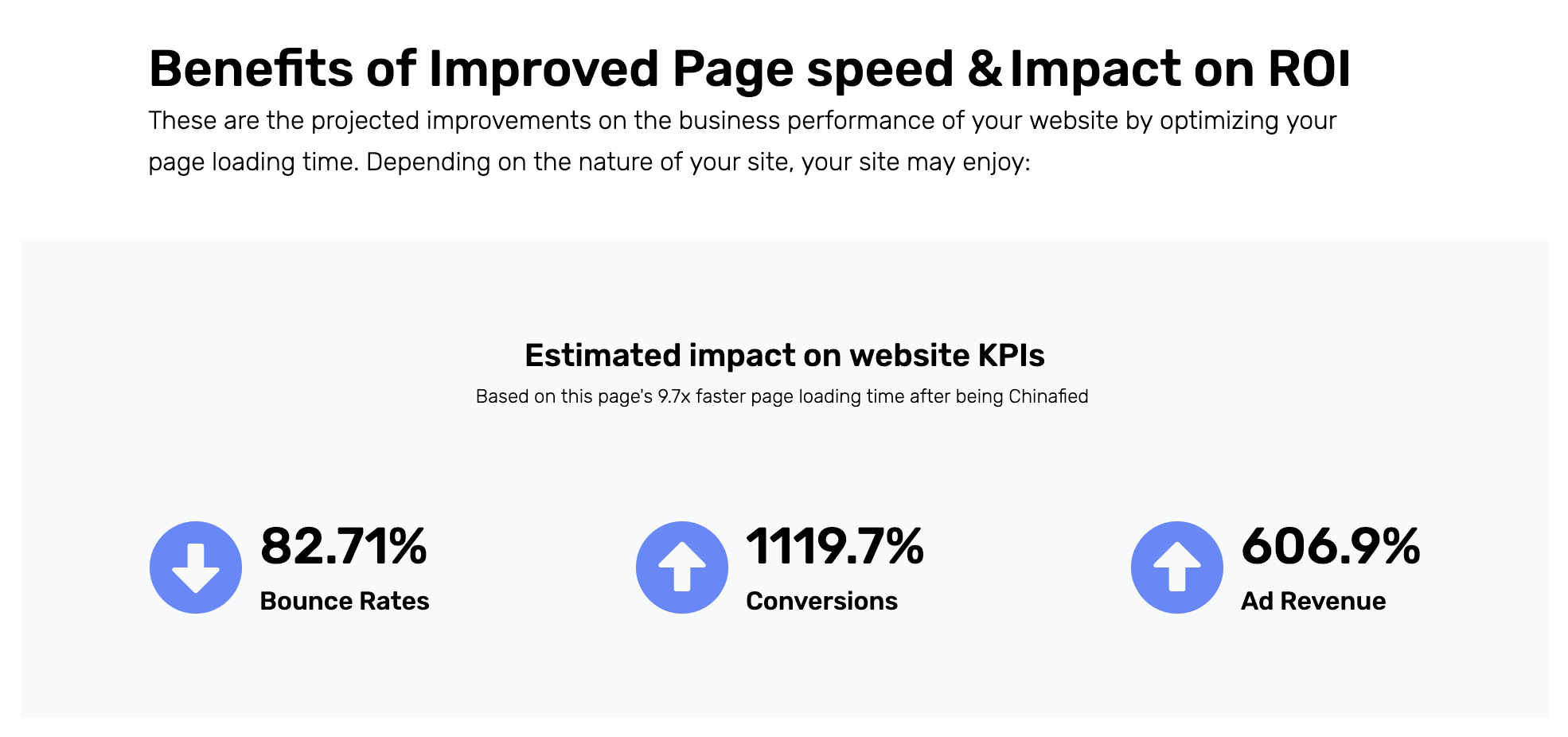
We'll leave this with a Histogram that outlines the frequency of page load times:
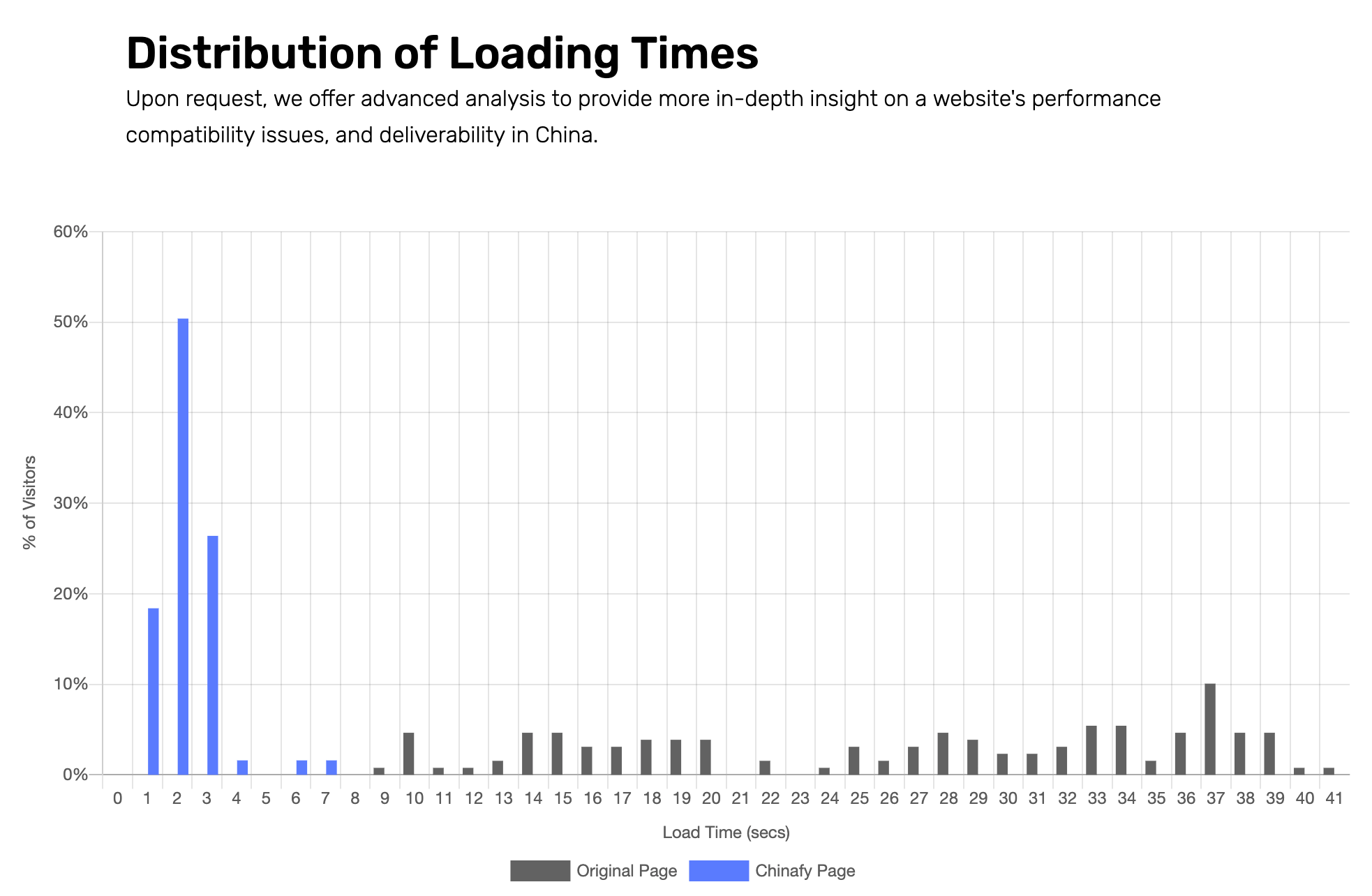
The Princeton page is relatively optimised, for a Western environment however. It loads ~ 33 resources (a small number), before retrieving a second set of files. This allows the page to feel light and scroll smoothly. The problem is that these 33 resources load incredibly slowly (as seen above). The Average Time for X Resources graph shows the average time it takes for that proportion of the page to load.
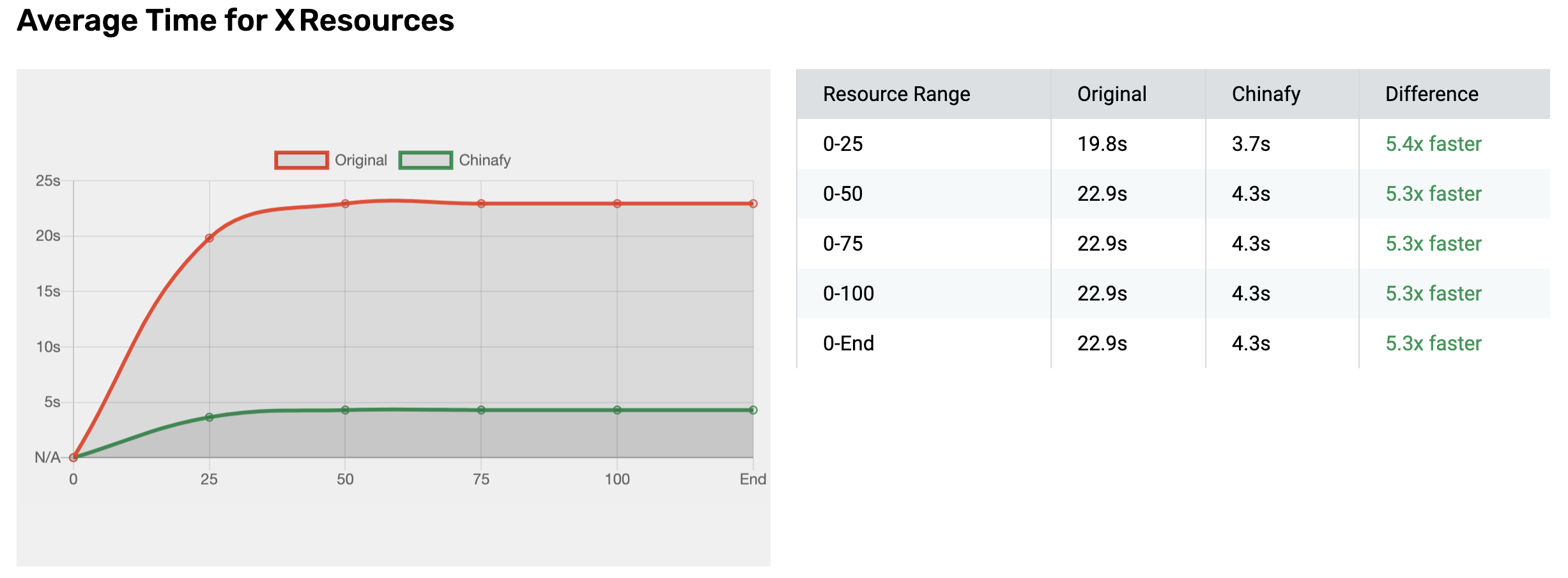
The Bucketed Time or X-Y Resources, is intended to be a summary of the resource waterfall.
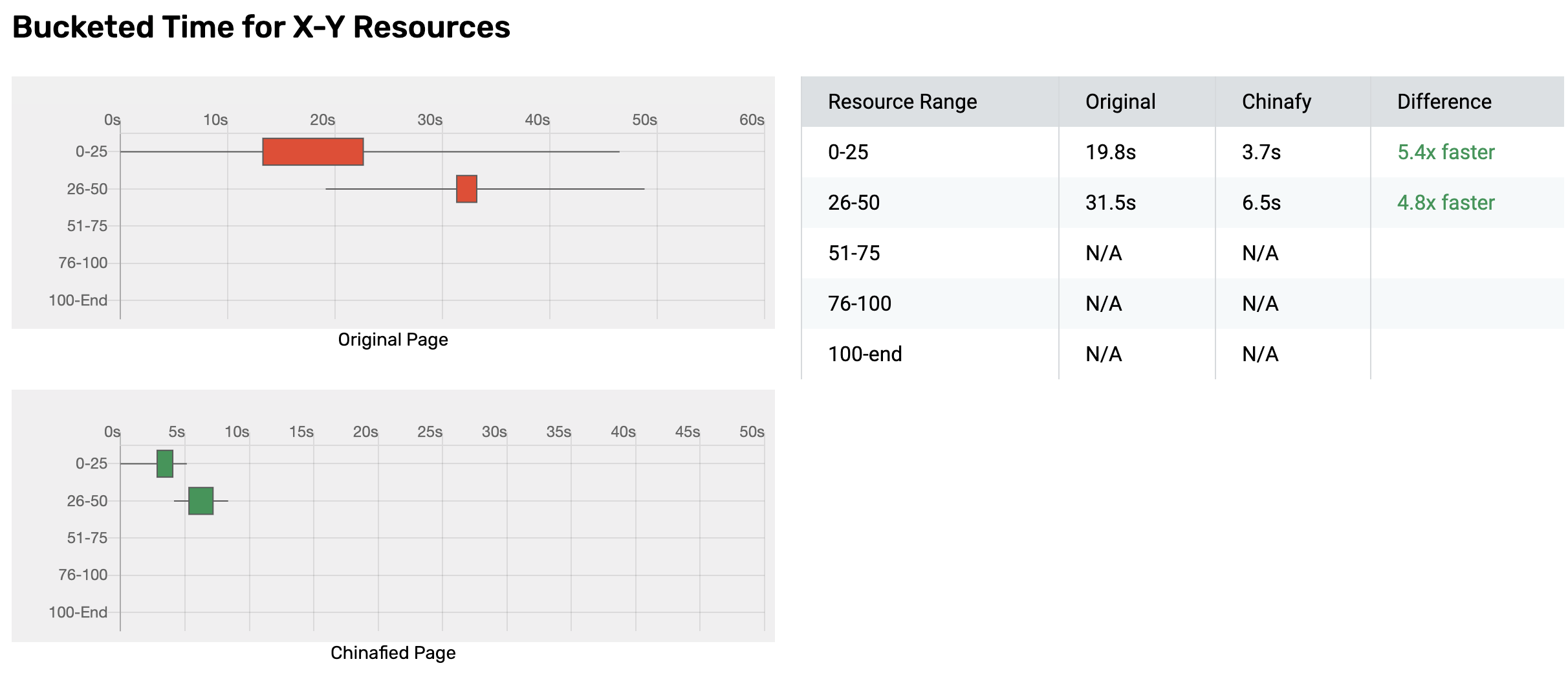
Since opening up Chinafy to alpha users in May this year, we've since had interest from close to a hundred Universities to accelerate their sites, and various subdomains in China largely for the two purposes mentioned: student acquisition, and research sharing. Chinafy is incredibly fast at scanning, and optimising sites. If you're an academic institution looking to attract China's brightest, reach out to us. While our technology is largely automated, we do like to see if there are any additional manual optimisations that may be appropriate. We typically can have you up and running within a day.








